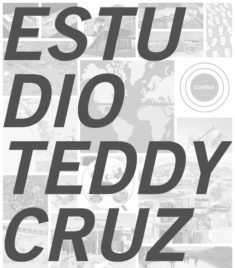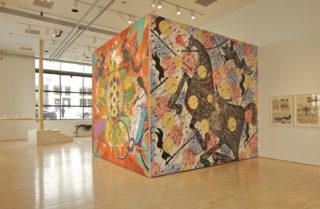The artist and architect Teddy Cruz (b. 1962, Guatemala) has been influenced in his practice by the Tijuana-San Diego border zone, and its tendency to serve as a demarcation between political, economic, and social entitlements as well as one between national territories. As part of a research-based and community-engaged practice, the Estudio Teddy Cruz investigates the shifting cultural demographics of border communities, and immigration’s effect on so-called traditional American neighborhood. Cruz is currently a professor in public culture and urbanism in the Visual Arts Department at the University of California, San Diego, and the co-founder of the Center for Urban Ecologies. His studio’s work has been exhibited widely, including at the Museum of Modern Art in New York, the US pavilion at the Venice Architecture Biennial, The Walker Art Center and the Museum of Contemporary Art San Diego.
Image courtesy Estudio Teddy Cruz

